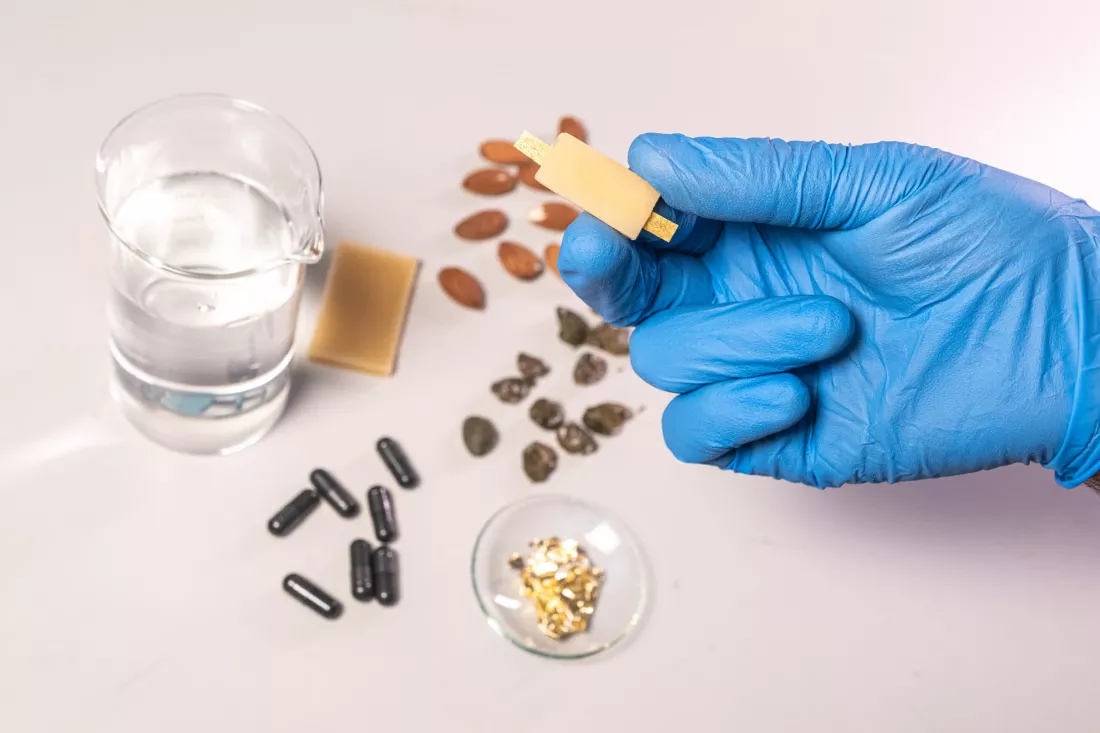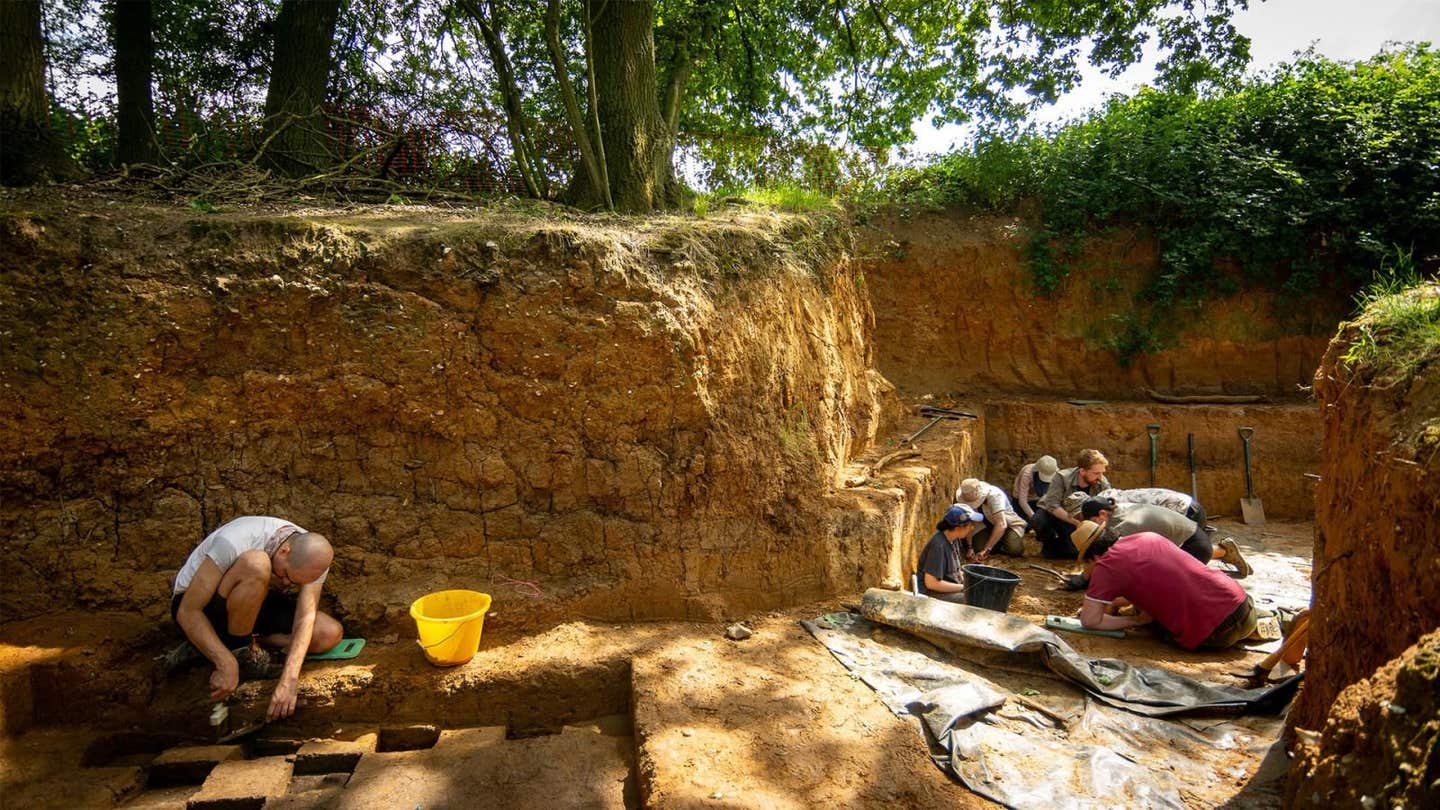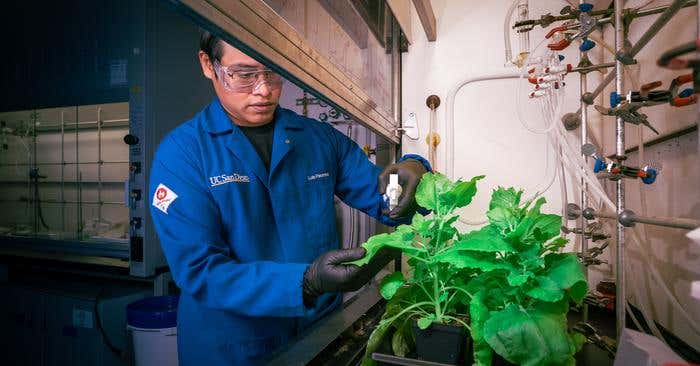Scientists develop a rechargeable battery made from food
What makes this achievement truly remarkable is that the battery is made from materials commonly consumed as part of our daily diet.

[May 25, 2023: Staff Writer, The Brighter Side of News]
What makes this achievement truly remarkable is that the battery is made from materials commonly consumed as part of our daily diet. (CREDIT: IIT)
In a groundbreaking development, a team of researchers at the Istituto Italiano di Tecnologia (IIT-Italian Institute of Technology) has successfully created a fully edible and rechargeable battery. What makes this achievement truly remarkable is that the battery is made from materials commonly consumed as part of our daily diet.
The proof-of-concept battery cell, described in a recently published paper in the prestigious Advanced Materials journal, is set to revolutionize the field of edible electronics.
Led by Mario Caironi, coordinator of the Printed and Molecular Electronics laboratory at the IIT Center in Milan, the research team has been dedicated to exploring the electronic properties of food and its by-products.
The goal is to combine these properties with edible materials, ultimately paving the way for the development of new edible electronic materials. Caironi's pioneering work in this field led to his receipt of a 2-million-euro ERC consolidator grant for the ELFO Project in 2019.
Related Stories:
Edible electronics is an emerging field with enormous potential for advancing the diagnosis and treatment of gastrointestinal tract diseases, as well as enhancing food quality monitoring. One of the key challenges in the development of future edible electronic systems has been the realization of edible power sources.
Taking inspiration from the biochemical redox reactions inherent in all living organisms, the IIT research group has successfully developed a battery that harnesses the power of riboflavin, also known as vitamin B2, as the anode, and quercetin, a food supplement and ingredient found in foods like capers, as the cathode.
To increase electrical conductivity, the researchers incorporated activated charcoal, a widely available over-the-counter medication. The battery's electrolyte is water-based, and to prevent short circuits, a separator made from nori seaweed, commonly used in sushi, was employed. The electrodes were encapsulated in beeswax, with two food-grade gold contacts emerging from a cellulose-derived support, resembling the foil used by pastry chefs.
Researchers developed a battery that utilizes riboflavin (vitamin B2, found for example in almonds) as anode and quercetin (a food supplement and ingredient, present in capers, among others) as cathode. (CREDIT: IIT)
Operating at a voltage of 0.65 V, which poses no harm to the human body when ingested, the battery cell can deliver a current of 48 μA for 12 minutes, or sustain a few microamps for over an hour. While this may seem modest, it is sufficient to power small electronic devices, such as low-power LEDs, for a limited duration.
This pioneering achievement represents the first-ever fully edible rechargeable battery, opening up a realm of possibilities for the development of new edible electronic applications. The potential applications of this breakthrough battery are diverse and far-reaching, with implications for health diagnostics, food quality monitoring, and even edible soft robotics.
Full battery test with Q/AC composite as the cathode and RF/AC composite as the anode. (CREDIT: Advanced Materials)
Commenting on the significance of this accomplishment, Mario Caironi stated, "We are thrilled to have successfully developed a fully edible and rechargeable battery. This achievement marks a major milestone in the field of edible electronics and opens up exciting avenues for future research and development. The potential impact on health diagnostics, food quality monitoring, and other related fields is immense."
The implications of this breakthrough are vast. In terms of health diagnostics, edible electronic devices powered by these rechargeable batteries could be ingested to monitor the gastrointestinal tract, providing valuable data for the diagnosis and treatment of diseases affecting this vital system. This non-invasive approach has the potential to revolutionize the field of gastroenterology and enhance patient care.
Fully edible battery cell. A fully edible battery was assembled using beeswax as packing, gold-laminated ethyl cellulose (EC/Au) as current collector, RF/AC or Q/AC composite as electrode material, the aqueous solution of NaHSO4 as electrolyte, and nori algae as separator. (CREDIT: Advanced Materials)
Furthermore, the use of edible electronic devices powered by these batteries can significantly advance food quality monitoring. With the ability to be incorporated into food packaging or directly applied to perishable items, these devices can monitor temperature, humidity, and even detect harmful pathogens, ensuring the safety and quality of food throughout the supply chain. This level of real-time monitoring can prevent foodborne illnesses, reduce waste, and enhance consumer confidence in the products they consume.
“Future potential uses range from edible circuits and sensors that can monitor health conditions to the powering of sensors for monitoring food storage conditions. Moreover, given the level of safety of these batteries, they could be used in children toys, where there is a high risk of ingestion. Actually, we are already developing devices with greater capacity and reducing the overall size. These developments will be tested in future also for powering edible soft robots”, pointed out the research coordinator Mario Caironi.
For more science news stories check out our New Innovations section at The Brighter Side of News.
Note: Materials provided above by The Brighter Side of News. Content may be edited for style and length.
Like these kind of feel good stories? Get the Brighter Side of News' newsletter.



